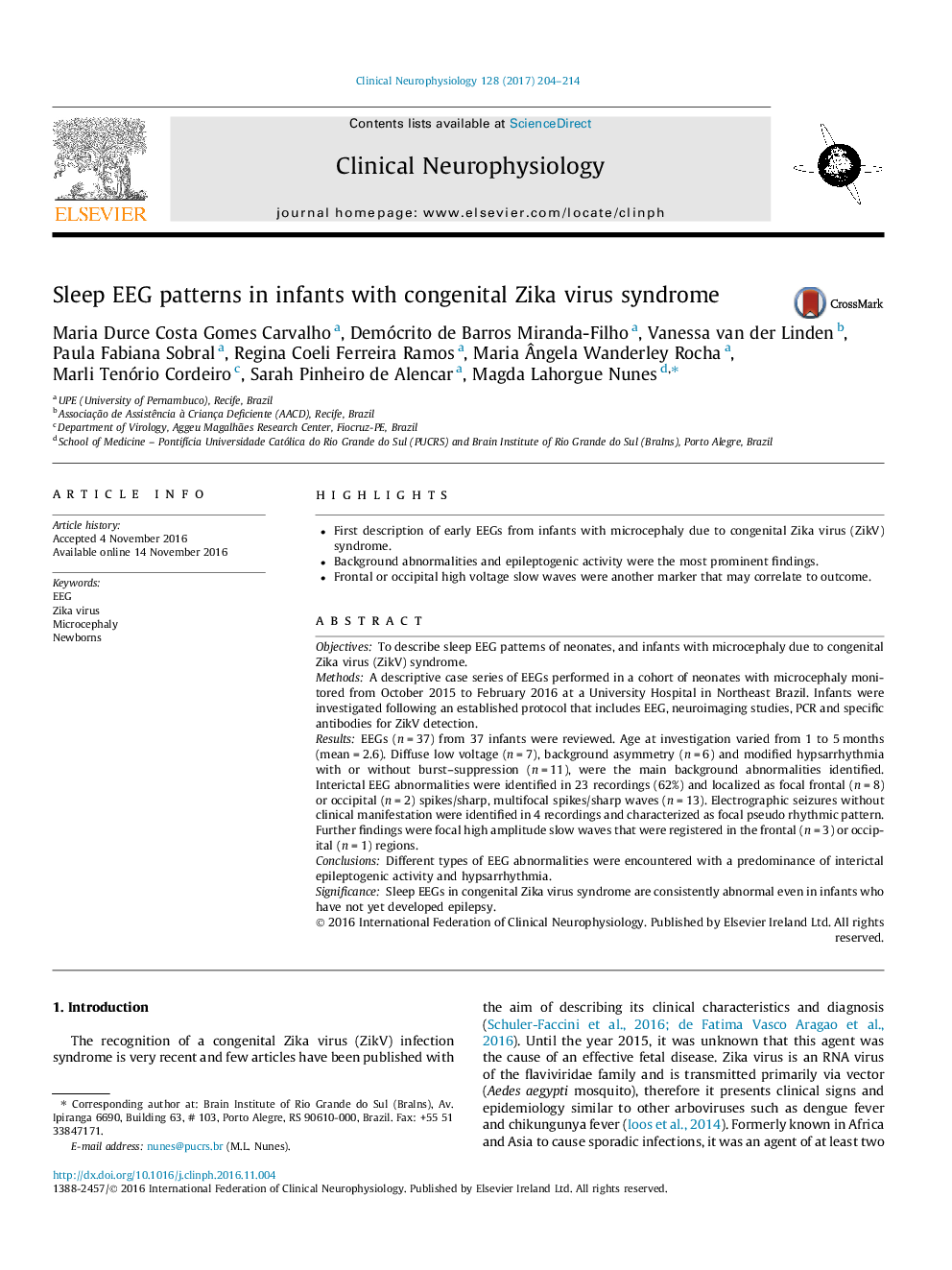| Article ID | Journal | Published Year | Pages | File Type |
|---|---|---|---|---|
| 5627442 | Clinical Neurophysiology | 2017 | 11 Pages |
â¢First description of early EEGs from infants with microcephaly due to congenital Zika virus (ZikV) syndrome.â¢Background abnormalities and epileptogenic activity were the most prominent findings.â¢Frontal or occipital high voltage slow waves were another marker that may correlate to outcome.
ObjectivesTo describe sleep EEG patterns of neonates, and infants with microcephaly due to congenital Zika virus (ZikV) syndrome.MethodsA descriptive case series of EEGs performed in a cohort of neonates with microcephaly monitored from October 2015 to February 2016 at a University Hospital in Northeast Brazil. Infants were investigated following an established protocol that includes EEG, neuroimaging studies, PCR and specific antibodies for ZikV detection.ResultsEEGs (n = 37) from 37 infants were reviewed. Age at investigation varied from 1 to 5 months (mean = 2.6). Diffuse low voltage (n = 7), background asymmetry (n = 6) and modified hypsarrhythmia with or without burst-suppression (n = 11), were the main background abnormalities identified. Interictal EEG abnormalities were identified in 23 recordings (62%) and localized as focal frontal (n = 8) or occipital (n = 2) spikes/sharp, multifocal spikes/sharp waves (n = 13). Electrographic seizures without clinical manifestation were identified in 4 recordings and characterized as focal pseudo rhythmic pattern. Further findings were focal high amplitude slow waves that were registered in the frontal (n = 3) or occipital (n = 1) regions.ConclusionsDifferent types of EEG abnormalities were encountered with a predominance of interictal epileptogenic activity and hypsarrhythmia.SignificanceSleep EEGs in congenital Zika virus syndrome are consistently abnormal even in infants who have not yet developed epilepsy.
